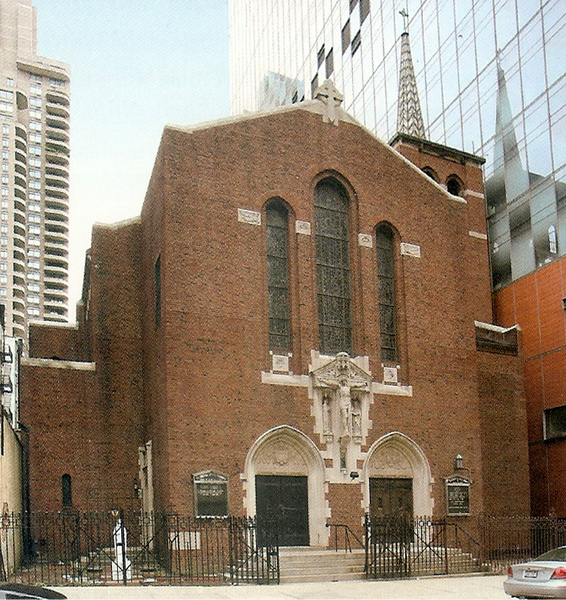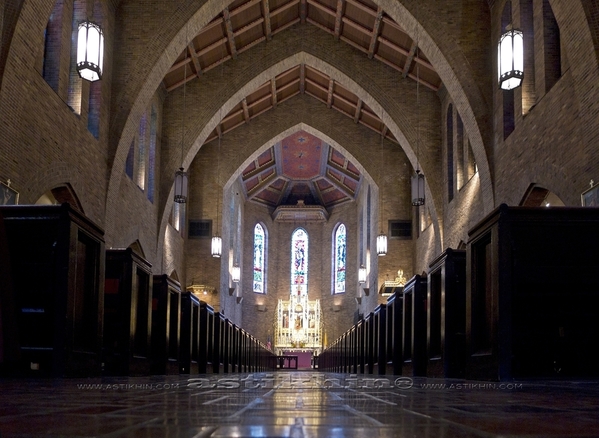In every big city, and in many smaller ones, there are famous and 'important' churches, often a large cathedral. But all those cities also have numbers of smaller and less-known churches that are sometimes overlooked.
As a New Yorker who spends what may be an inordinate amount of time in churches when I travel and next to none when at home, I've obviously missed many local gems. I only ever to to this one because someone had propped open a door on a hot night while I was passing by on my way back to Brooklyn.
But through that door, I saw an unusual altarpiece, and a nave whose arches and vaults were so unlike 'the usual' that I stopped for a look, and stopped a few times again. All the traditional parts of a church are there, but there's a distinct flavor of moderniste or Arts and Crafts to it. And, it turns out, an interesting history as well.
The church is run by the Dominican order; in the 1890s, as a large Irish Catholic population spread in the East 60s and 70s, long before the 'carriage trade' took over the area, and the St Vincent Ferrer Church, further west, created St Catherine as a mission to cover the area from Second Avenue to the East River, and from 60th to 72nd Streets.
Since St Catherine is a patron saint of healers, the Fathers could be accused of foresight. About the time the original church and school were replaced by the present building in the early 1930s, the area around it began to fill up with hospitals, displacing much of the original population.
Today, it is pretty much surrounded by Memorial-Sloan Kettering, Weill-Cornell NY Hospital, the Hospital for Special Surgery, Mary Manning Walsh and more, and the church turned its attention to focus on hospital staff and patients. Its former school, original priory and gardens were eventually sold to Sloan-Kettering, and a new priory tucked into the remaining space.
Except at the highest levels, there is not much stained glass in the church; that is in part because both sides of the nave are up against neighboring buildings. But that doesn't mean that the glasswork isn't spectacular: Colors are vivid, figures are large enough to make a strong impression, and details, such as those below, show a strong humanizing influence in the faces.





Comments (0)